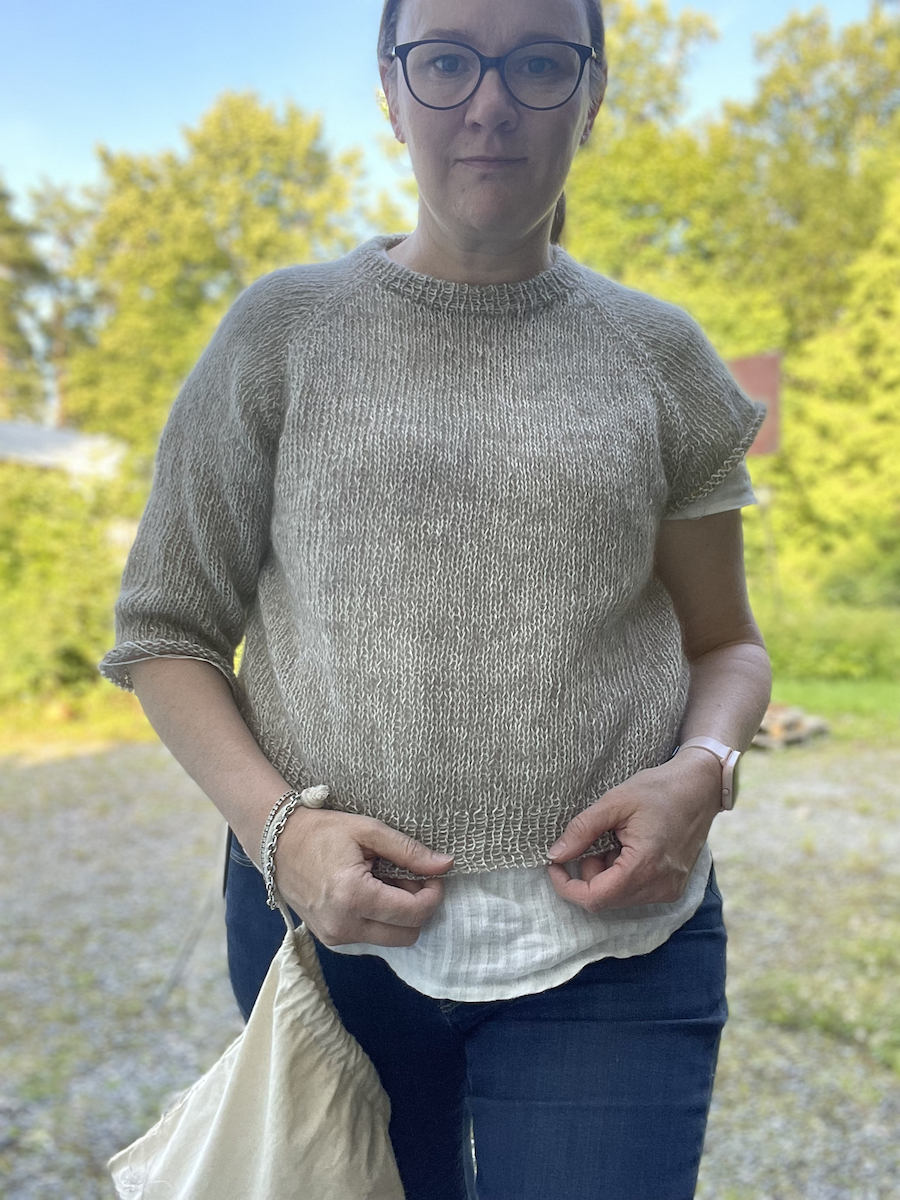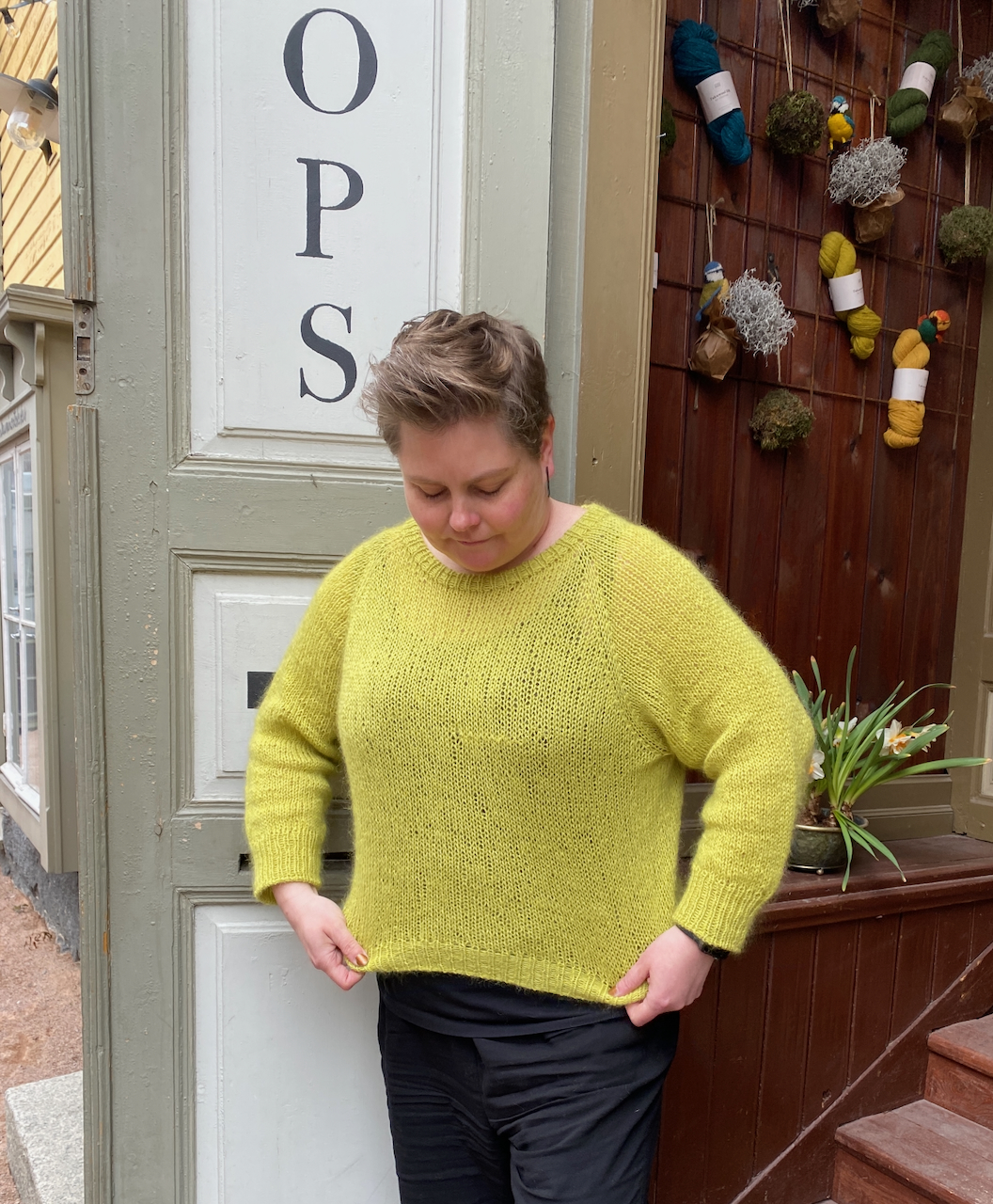If you forgot what we are talking about, read part 1 and part 2 first.
Divide the body and sleeves
Once you are done with the raglan increases you divide the body and the sleeves. Place the stated sleeve stitches on scrap yarn or use the awesome TKB cords and cast on new stitches (as many as stated)with backwards cast on method under the armholes (on both sides.
Continue with the body, it’s all smooth sailing from here. Knit until stated or desired length minus the ribbing. Then change back to smaller needles, knit ribbing as instructed and bind off using the Tubular Bind Off method.
A note about the Tubular Bind Off. In many tutorials it says to leave a yarn tail four times as long as the circumference/width of the stitches to be cast off. I never used that much yarn. Three times is more than enough. Check Tiina's video on how to Tubular bind off. (It's in Finnish, but hopefully clear enough. )
Sleeves
Pick up the stitches for sleeves from scrap yarn or TKB cords. There is also mention of picking up stitches from the armhole, do that too. Join the yarn and start to knit in the round, on larger needles.

Siina’s Lento, here still on the needles from Lana Gatto Fresh and Isager Silk Mohair.
As this might be your first sweater you might not know if you tend to knit sleeves on a tighter gauge than the body of a sweater. However, if you notice this a few inches in, unravel and change to larger needles, 0.25 mm or even 0.5 mm larger. Somehow knitting smaller circumferences might make your gauge tighter. It happens to the best of us, not to worry! If you have the opposite problem (suppose that can happen too), well go down a needle size.
Knit the sleeve decreases as stated in the pattern. Once you have the desired length, change to smaller needles. Knit ribbing for stated or desired length. Cast off using Tubular Cast Off. Knit the 2nd sleeve the same!

Kati in her winter Lento from Peruvian Highland Wool.
Finishing
This might be a matter of taste, but I do not weave in any ends before I wash my sweaters and let them dry. Why? I think that the yarn ends will stick out less this way, or maybe it’s more of a habit. Anyway, weave in the ends at some point!
Place your sweater into a sink with wool wash and let it soak for 15 mins. (use cold or lukewarm water). Squeeze out as much of the water as you can, wrap your sweater in a clean, dry towel. Dance on top of it! (You can skip this step :) )
Lay your sweater flat to dry! It is really important to lay the sweater flat to dry, to avoid stretching it too much. Check the measurement of the sweater against the given measurements for your size in the pattern. Smooth all possible wrinkles, use a measuring tape to check that you don’t stretch the wet sweater too much.
I do not block my sweaters much unless it is of a lace kind. (The lace needs to be blocked in order for it to show properly.) With a stockinette sweater I just lay it flat to dry, and like I said above, smoothen any wrinkles, and wait for it to dry completely. Put it on, give yourself a well deserved tap on the back, you’ve just made a sweater!

Tiina’s Lento number 2, made from Sunday and Tynn Silk Mohair.
Final notes
Knitting is mostly fun, but like any hobby or skill, it might not be fun in the beginning. Yet each unravelled stitch teaches you something, and I promise if you practise, you’ll improve, not just as a knitter, but maybe also as a person.
Happy sweater knitting!
- Titityy flock